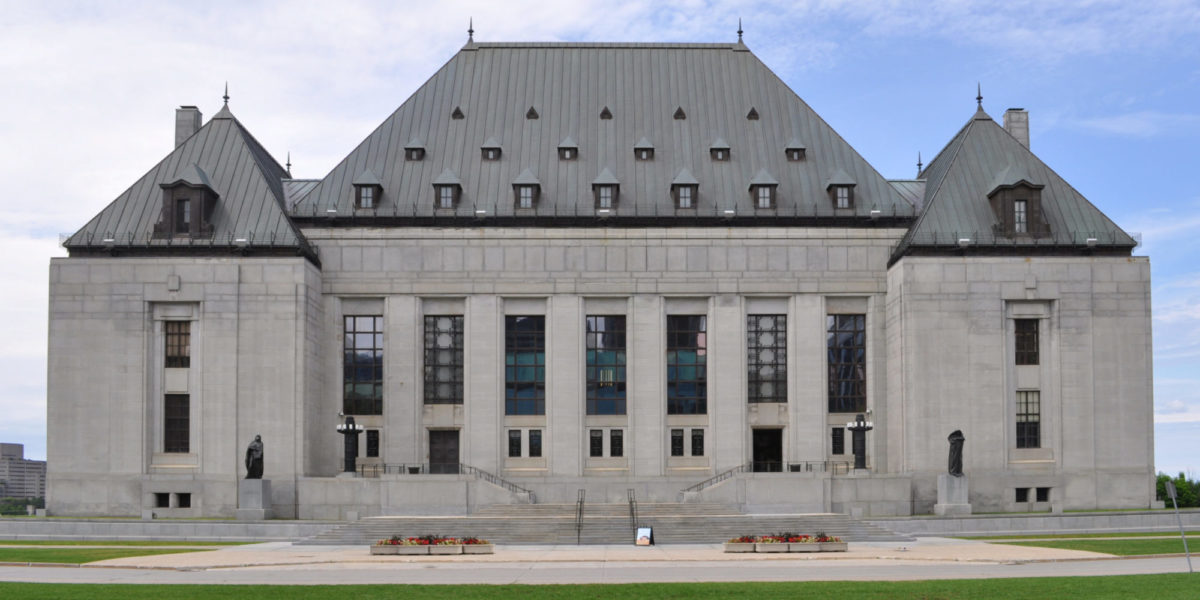The Supreme Court of Canada has, in effect, ruled that the United States is a safe country for refugees.
Today, June 16, 2023, the Court upheld the safe third country agreement between Canada and the U.S.
This decision upholds a Federal Appeals Court judgment which overturned Federal Court justice Anne Marie McDonald’s 2020 ruling that the safe third country agreement was contrary to certain provisions of Canada’s Charter of Rights and Freedoms.
Canada’s third country rule states that people fleeing persecution and potentially deadly harm for religious, gender, sexual orientation or political reasons must seek asylum in the first safe country in which they land.
The 2002 agreement with the U.S. (which came into force in 2004) allows Canada to send asylum seekers from such countries as Syria, Haiti, Guatemala and Afghanistan, who enter Canada from our southern neighbour, back to the U.S.
Until recently, refugees who entered Canada without going through an official border crossing, notably at Roxham Road on the Quebec-New-York-state border, could stay in this country and pursue their asylum claims here.
Earlier this year, the Trudeau government gave in to considerable pressure from the Quebec government and ended that practice.
When it comes to refugees Canada is in a privileged position, compared to almost all other countries. We share a land border with only one other country, the U.S.
It is very difficult and costly for most asylum seekers to get here directly. For most that would require getting on an airplane, which, in turn, would require a visa, not easy to get for people in far-flung conflict zones.
Federal Court ruling had detailed horrific abuses in U.S.
When she overturned the safe third country rule Justice MacDonald was mindful of the severe abuse many asylum seekers suffer at the hands of U.S. authorities. That group includes some refugees sent back to the U.S. from the Canadian border.
In her decision, Justice McDonald said one refugee’s account of her ordeal was particularly compelling.
That was the case of Nedira Jemal Mustefa, a Muslim woman from Ethiopia and a member of the Oromo ethnic group.
Mustefa had lived with relatives in the U.S. for a number of years and finished high school there. But, at the time of her graduation, U.S. officials wanted to deport her. They said she did not qualify to continue her studies in the U.S. The prospect of returning to Ethiopia struck fear in Mustefa’s heart, because the Ethiopian government had launched a campaign of violence against the Oromo.
In the words of Justice McDonald’s ruling:
“In 2016 and 2017, the Oromo were subject to mass arrests and held without charges or trials. The government dispatched the military to Oromo regions leading to the death and disappearance of many Oromo youth.”
Instead of returning to her dangerous homeland, Mustefa tried to enter Canada.
Canadian border guards sent her back to the U.S. There, Justice MacDonald reported, she was imprisoned under harsh conditions, without respect for her religion, and, for a time, held in solitary. It was, the Justice concluded, a “terrifying, isolating and a psychologically traumatic experience.”
READ MORE: The U.S. is a not-so safe third country for refugees
A group of organizations, including Amnesty International and the Canadian Council for Refugees (CCR), together with some individual refugees who argued the practice of sending them back to the U.S. trampled on their rights, brought the original case against the safe third country agreement.
The Council for Refugees has been tireless in its efforts to get the Canadian government to reconsider the 2002 agreement.
When the government doubled down earlier this year and closed the back door option of Roxham Road – in exchange for taking a pre-selected 15,000 North and South American asylum seekers off the U.S.’s hands – the Council pointed out:
“Although we welcome the government’s commitment to resettle 15,000 people from the Western Hemisphere, we note that this is a small number, compared to the number of people who will be barred from seeking refugee protection in Canada. It is a very small number compared to the more than 177,958 Ukrainians who have arrived in the country and the more than 592,405 whose applications have been approved. Since we have shown that we are able to create efficient pathways to safety and welcome considerable numbers of Europeans, we should be able to provide protection to the roughly over 40,000 people that cross the border seeking protection in a year.”
There is a glimmer of hope for refugees and their supporters in the Supreme Court’s decision.
The ruling notes that there are what it calls “legislative safety valves” that would make it possible for Canadian officials to allow desperate and frightened refugees to stay in Canada despite the Canada-U.S. agreement. Those safety valves include exemptions on the basis of humanitarian and compassionate or public policy grounds.
Supreme Court Justice Nicholas Kasirer wrote the judgment which the Court agreed to unanimously. In his decision, Kasirer pointed out that it appears Canadian border guards and other government officials do not routinely avail themselves of the legislative safety valves.
The ruling does not go further on the safety valve issue because it was not part of the original case.
But the Supreme Court does invite those who brought the first instance case to go back to the Federal Court and seek some guidance on the administrative practices of Canadian officials with regard to refugee claimants coming from the U.S.
And so, the fight in the courts for full respect for refugee rights is not over.



